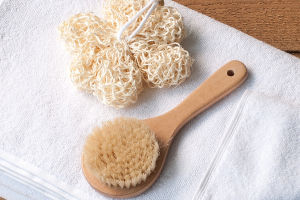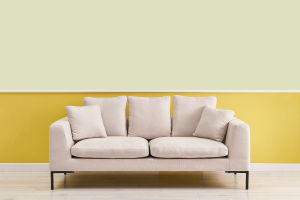Sofas are everyday household furniture items and are almost necessary in living rooms.
Many materials, such as leather, fabric, and solid wood, are available for sofas on the market.
Regarding appearance, leather sofas are considered high-end and stylish, while fabric sofas are more contemporary and avant-garde. Solid wood sofas provide a rustic and natural feel. Each material has its characteristics, and many households often choose between leather and fabric sofas based on their interior decoration style.
So, which is better, leather or fabric sofas? To answer this question, it's essential to understand their advantages and disadvantages first and then make a suitable choice based on the decoration's actual needs and the homeowners' personal preferences. Let's delve into the relevant details in the following sections, hoping that readers will gain some insights after reading.
1. Cleaning:
Common perception suggests that leather sofas are easier to maintain than fabric sofas. However, this depends on specific circumstances. Due to its thick surface coating, low-end genuine leather can generally be wiped clean of water and non-adhesive oil stains.
But it may struggle with stains left by markers, water-based pens, or watercolors. On the other hand, fabric materials mostly have hydrophilic properties, but they can be treated with textile waterproofing agents to achieve water, oil, stain, and easy-to-clean properties. However, the effectiveness of these treatments may diminish over time.
2. Adhesion to skin:
Low-end genuine leather, due to its poor leather grade, often requires embossing and a thicker surface coating to conceal its flaws. However, this thicker coating can reduce breathability, leading to a sticky feeling when in direct contact with human skin.
Conversely, mid to high-end genuine leather usually has a minimal surface coating, providing better breathability. This is why wearing leather jackets feels comfortable, whereas wearing PU jackets may feel stuffy. However, individual experiences may vary depending on factors such as sweat gland activity.
3. Temperature Sensation:
This point is particularly controversial when it comes to genuine leather. Fabric materials may visually appear warm, but they can feel relaxed when touched. This is due to the unique properties of natural materials.
In humid and hot regions, fabric sofas may feel hot, and leather sofas may not fare much better. Both may require air conditioning for comfort during summer. However, comfort is not significantly affected in cold and dry regions with heating systems in winter, whether it's leather or fabric sofas.
So, which one is better, leather or fabric sofas? It ultimately depends on individual preferences, lifestyle, and environmental factors. Both have unique qualities, and weighing the pros and cons based on personal needs is essential before deciding.


